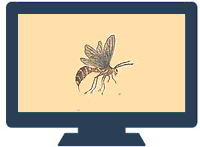Entomology, Department of
Date of this Version
2019
Document Type
Thesis
Citation
University of Nebraska-Lincoln Department of Entomology Online Masters Program Final Project. Lincoln, Nebraska.
Abstract
Phaseolus vulgaris, or dry beans, are generally cultivated for their seeds, which add flavor to the diets of millions of people throughout the world. This crop was originally domesticated in South America more than 7,000 years ago, eventually spreading north through Mexico and across most of the United States (NDBGA, n.d.). Phaseolus vulgaris belongs to the legume family, and like other legumes it can fix nitrogen in the soil from the air through a symbiotic relationship with a bacterium called Rhizobia. In addition to this, P. vulgaris is high in protein, and in many parts of the world, it is considered the cheapest way to acquire protein (Plants of the World Online, n.d.). In Nebraska, dry bean producers plant around 140,000 to 200,000 acres of beans annually, producing approximately 1 billion servings for human consumption. The production is concentrated in Western Nebraska where the climate is arid, and the warm days and cool nights provide excellent growing conditions for dry, edible beans. The state of Nebraska produces a greater amount of northern beans than any other state in the nation, is second in pinto and light red kidney production, and fourth in black bean production (Ostdiek, 2018). Insect pollinators provide critical ecosystem services to many fruit, vegetable, and field crops that depend on pollination for fruit and seed production (Gill & O’Neal, 2015). Phaseolus vulgaris is a self-pollinating crop, and therefore does not require any pollinator agents for its reproduction. However, it is thought that flowers attract pollinators. Due to past research in crops from Phaseolus spp. and observations of pollinators in dry bean fields, it is believed that they increase yield and seed quality. Previous research papers such as Du Preez et al. (1975), and recent papers such as Kingha et al. (2012) and Doukal et al. (2013) confirmed that Hymenopterans are related to the increased of yield, size, and seed quality of Phaseolus spp. crops. They also recommended the planting of dry bean fields close to bee hives or nests to improve pod and seed production. Therefore, the conservation of pollinators such as Hymenopterans and a better understanding of pesticide application on fields are important. Lastly, the improvement of yield in the crop is essential to meet the demand in world nutrition. The objectives of this study are to describe the pollinator community within dry bean fields, gain insight of pollinator taxa that may contact dry bean pollen, and verify if they affect yield and seed quality of the plant.


Comments
Copyright 2018 Eduardo Valentín Cruzado